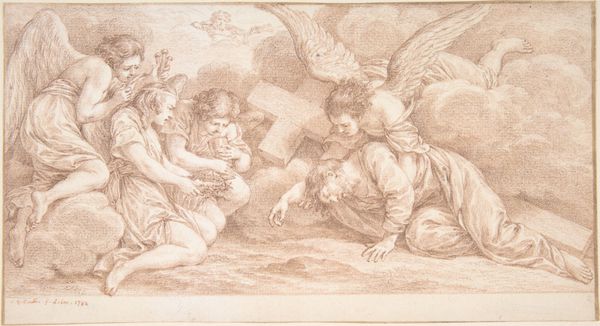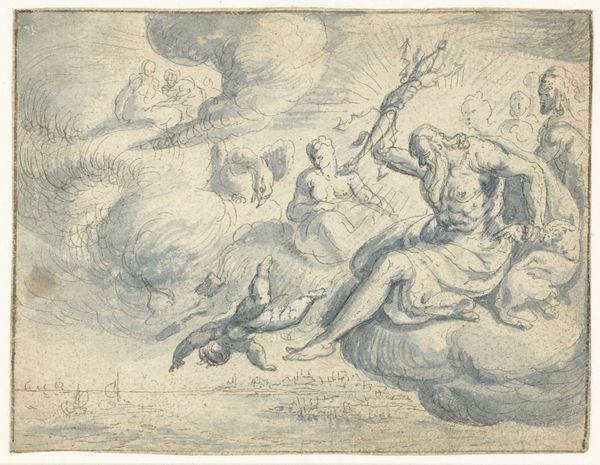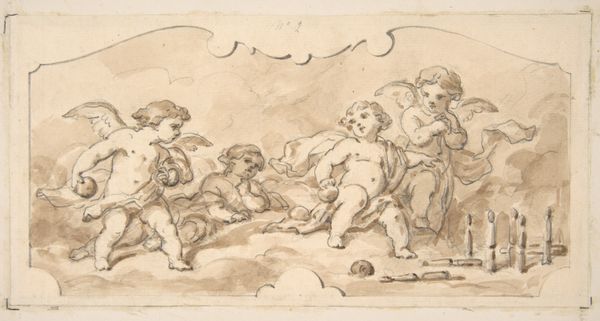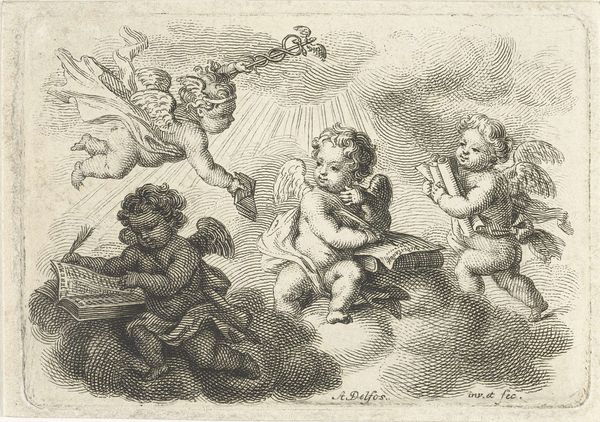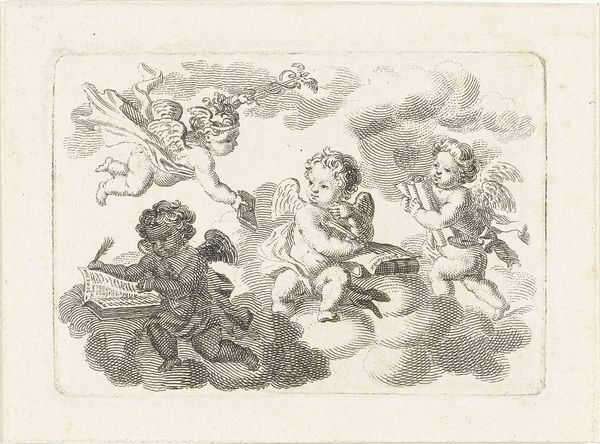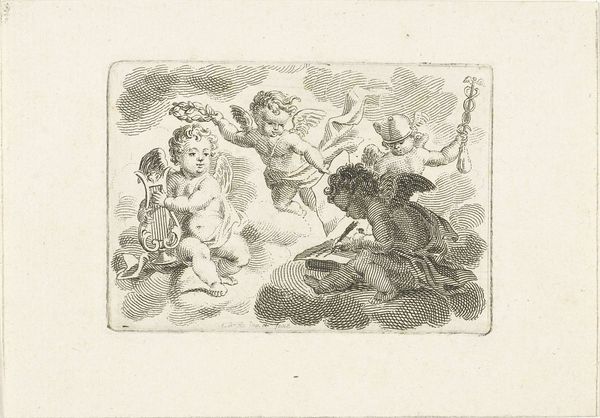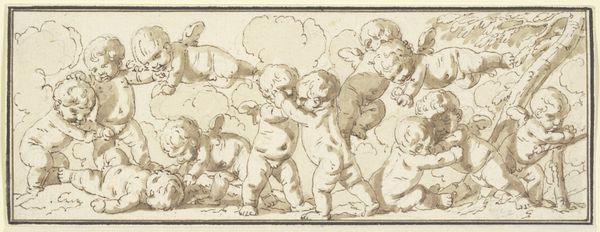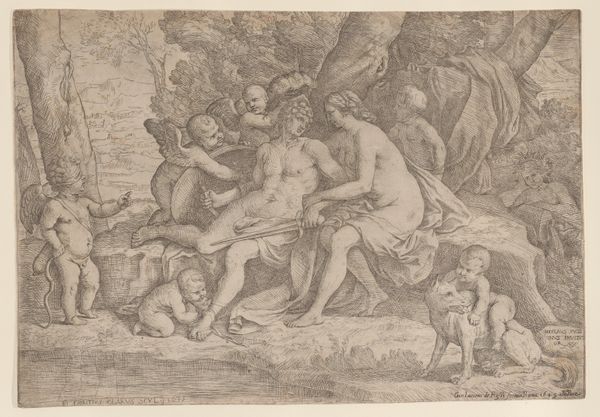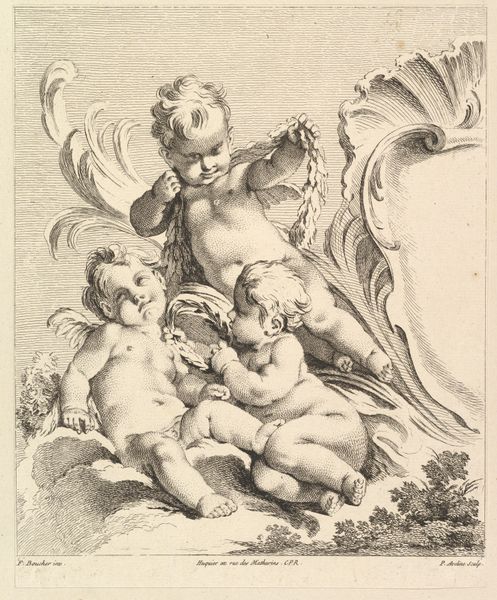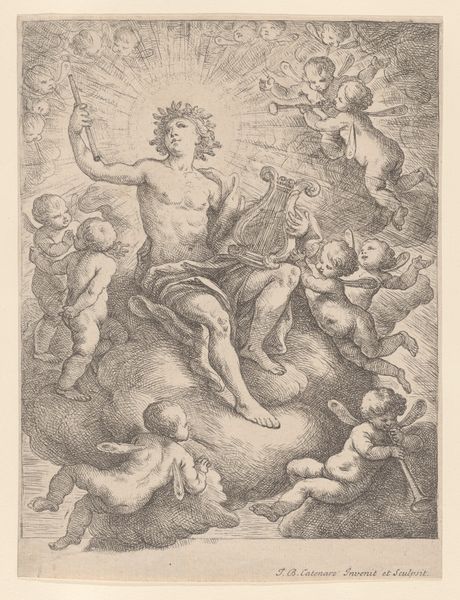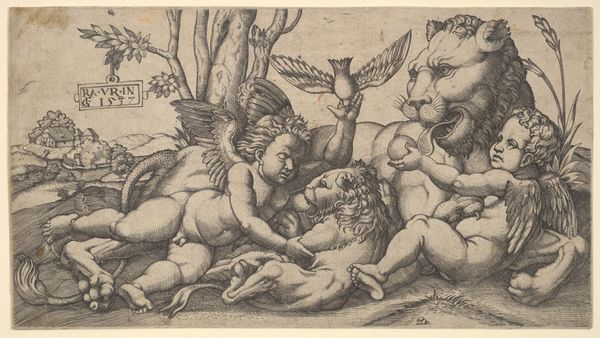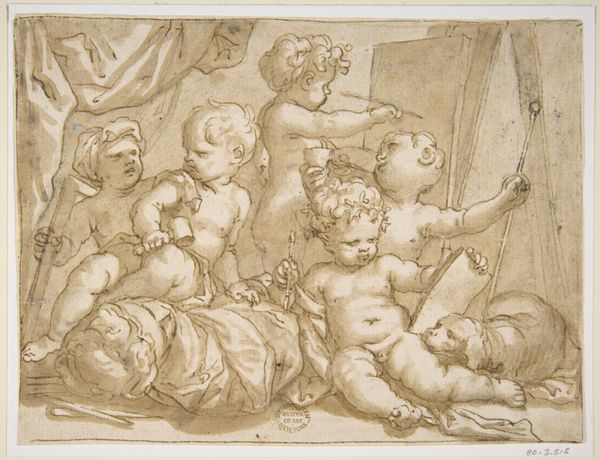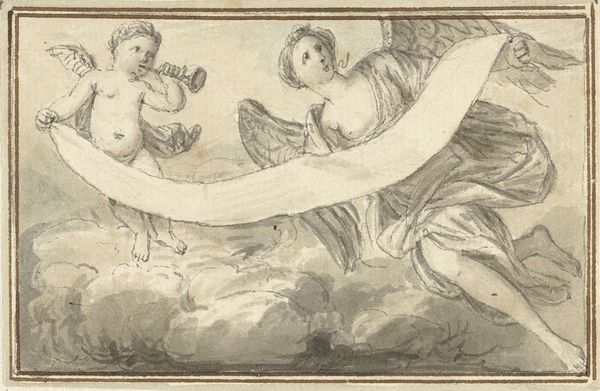
Dimensions: height 61 mm, width 85 mm
Copyright: Rijks Museum: Open Domain
Abraham Delfos rendered this ink drawing of putti on clouds with books sometime before 1820, and it now resides in the Rijksmuseum. Here, we see cherubic figures amidst billowing clouds, actively engaged with books and writing. This evokes the classical allegory of divine inspiration, where knowledge and creativity originate from a celestial or higher source. The motif of putti, or cherubs, harkens back to ancient Roman art, where they symbolized love and divine presence. Yet their evolution through the Renaissance imbued them with Christian connotations, often representing the presence of God or divine messengers. Observe the act of writing. The putto diligently inscribing on a book taps into a deeper, archetypal image—the scribe, the recorder, the keeper of knowledge. This image, laden with both classical and Christian symbolism, touches upon our collective psyche, resonating with our innate desire for knowledge and our subconscious association of it with the divine. The cyclical return of these symbols—from antiquity to the Renaissance and beyond—demonstrates how cultural memory persists. Each era reinvests these symbols with new meanings, perpetuating a continuous dialogue between past and present.
Comments
No comments
Be the first to comment and join the conversation on the ultimate creative platform.
